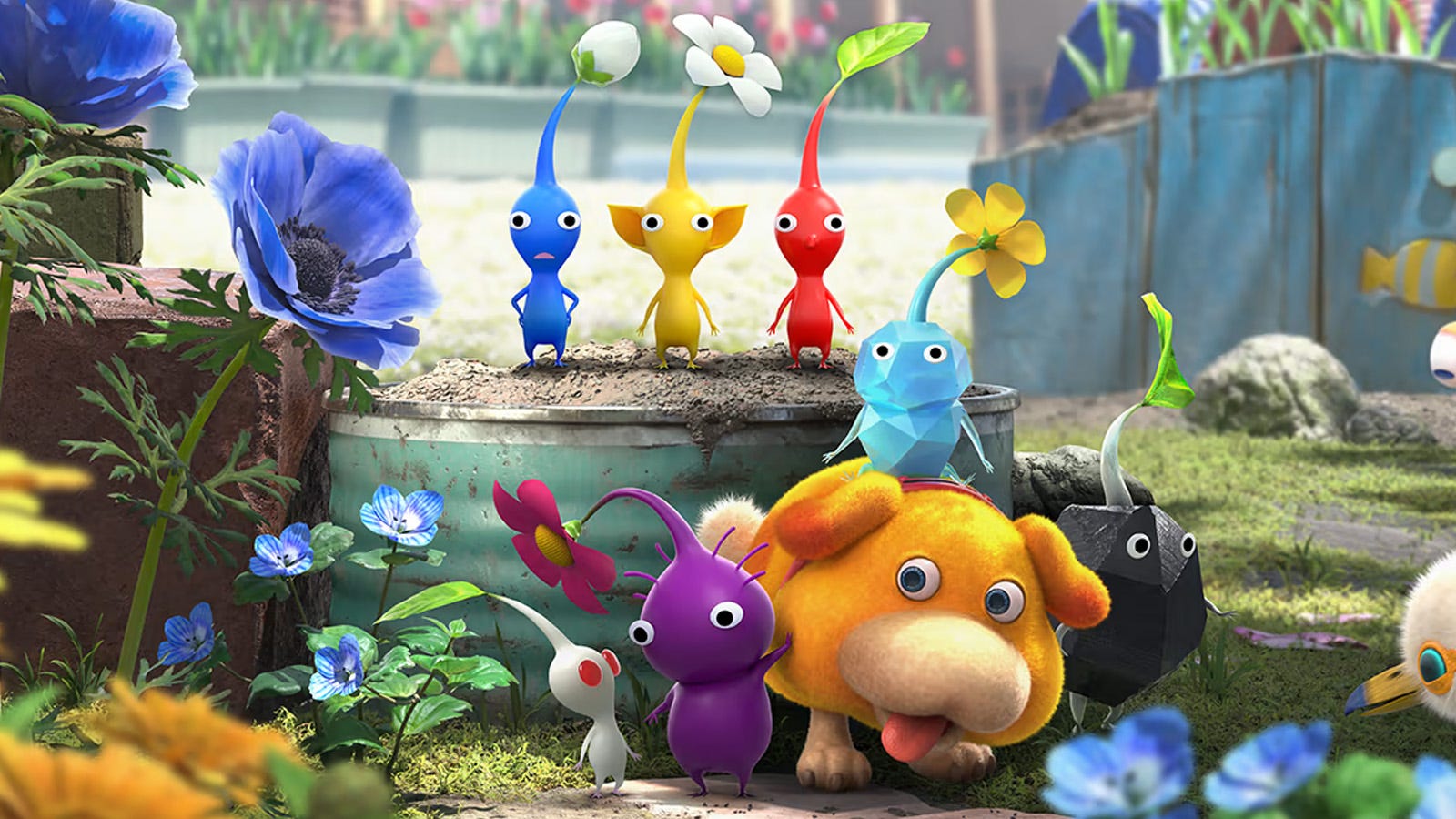
I’ve always loved the Pikmin series’ setting, and the suggestion that these tiny creatures are hiding somewhere out there in our world, overlooked but only just out of sight. And I love the idea that despite living around us, in our homes and gardens, between mud-caked plant pots and heavy-headed dandelions, that Pikmin require people with a slightly different – indeed, alien – point of view to uncover them, spend time with them, and realise their true worth.
It’s a feeling I think reflects attitudes to the often slightly-overlooked Pikmin series overall, despite several major incarnations, re-releases, spin-offs, and promotion from the legendary Shigeru Miyamoto himself. In terms of sales it has never troubled the likes of Splatoon or Luigi’s Mansion, let alone Mario or Zelda. It’s something of an oddball concept, with a cutesy strategy wrapper that hides decidedly more hardcore demands of resource and time management. And while its characters look good as soft toys, I wonder how many plushie owners actually slogged it through to 100 percent Pikmin 3. Perhaps it’s bad luck? Until now, Nintendo has unfortunately always planned new Pikmin entries for its hardware generations that underperformed. Or perhaps, despite repeatedly coming close, Nintendo has simply never quite cracked a formula that works for a wide audience. Well, after experiencing the sheer wealth on offer in Pikmin 4, I’m not sure what else Nintendo can try.
With brilliant results, Pikmin 4 acts both as the perfect entry point into this world and as an extremely well-examined follow-up for long-time fans who’ve waited a decade for Nintendo to nail this next chapter. A good example of this is Oatchi, the game’s new canine co-protagonist, who I started off feeling distinctly ambivalent about. As anyone who’s played Pikmin 4’s demo will know, the game starts with the gentlest of ramps up to the series’ usual requirements of dividing your time and resources among different Pikmin types and different human (now, also spacedog) leaders. Division of labour is a key component of the series that has evolved over time, and it elevated Pikmin 2 from its solo-protagonist predecessor. But things went too far in Pikmin 3, where control of three protagonists via the Wii U’s GamePad tablet took an awkward swing towards RTS territory.




